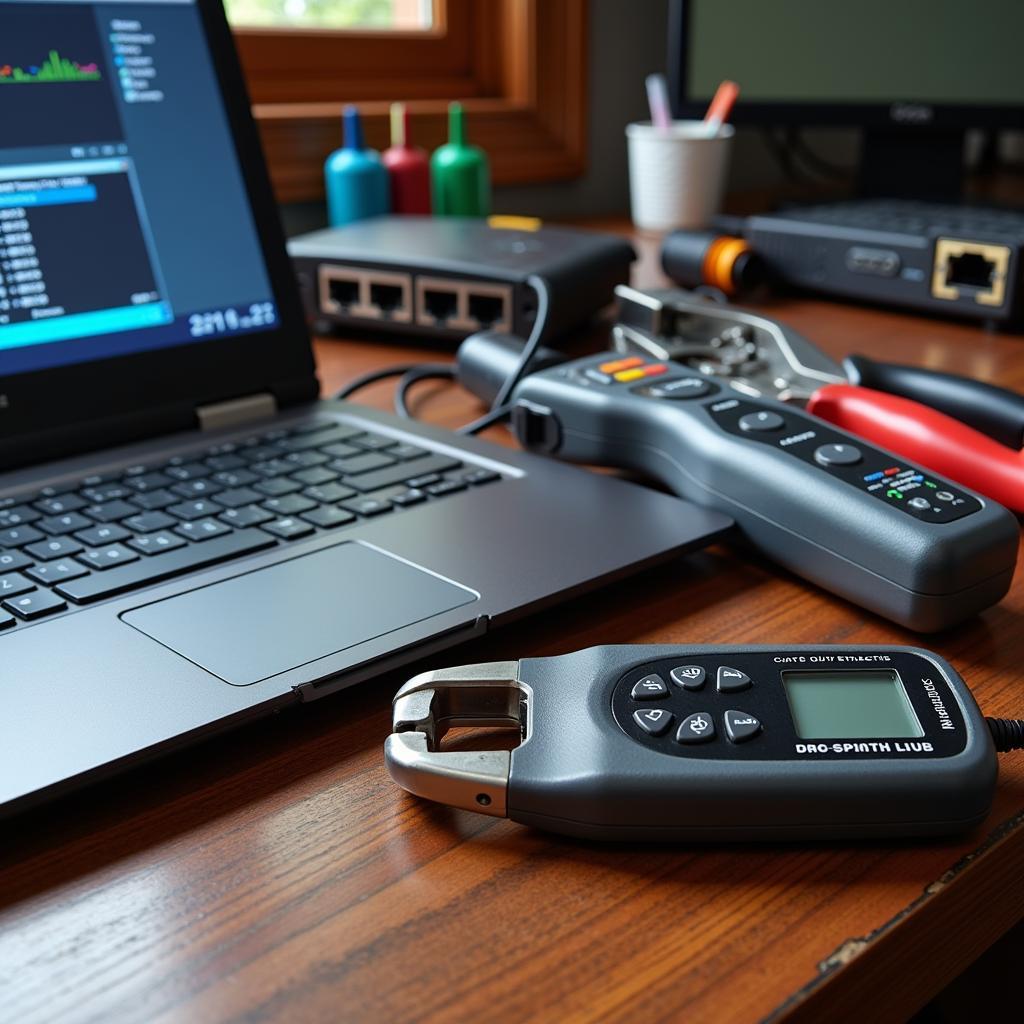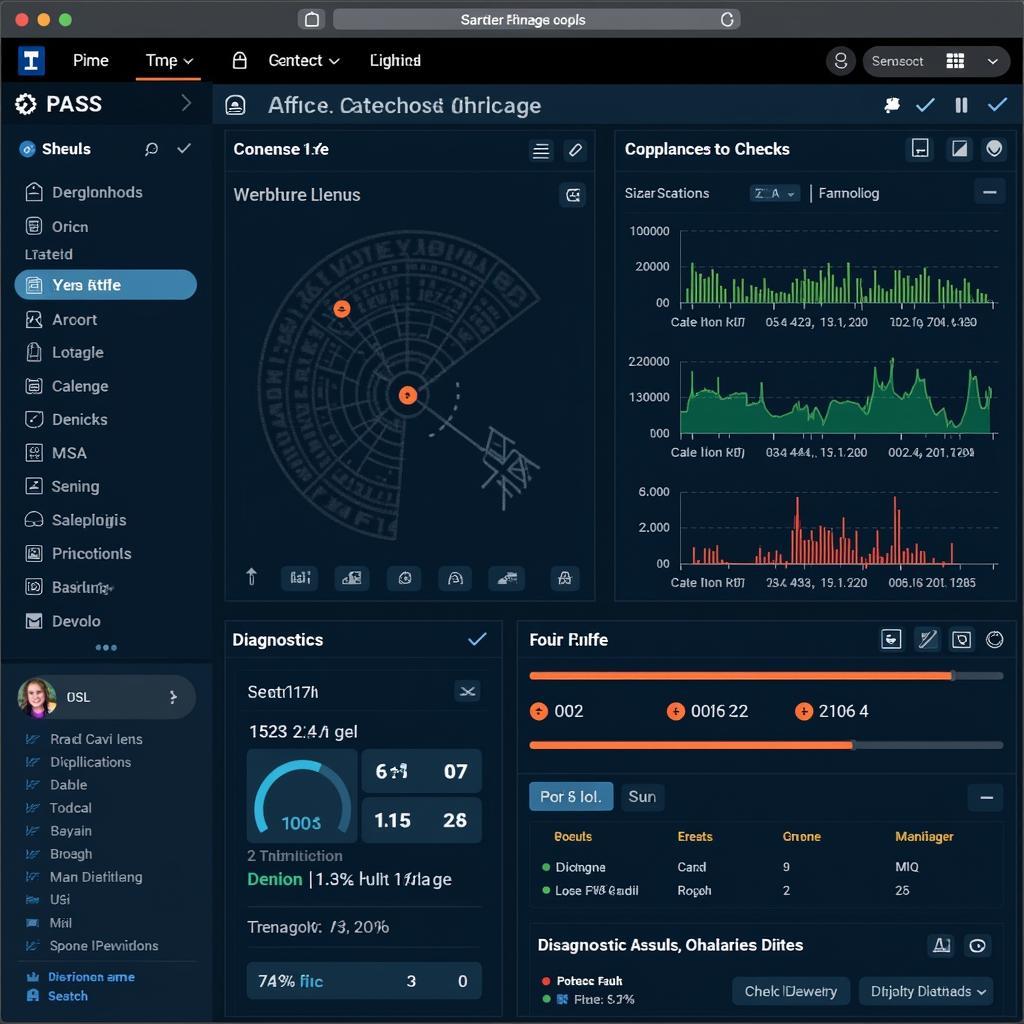A network diagnostic tool is a software or hardware solution designed to identify and troubleshoot problems within a network. These tools can examine various aspects of your network, including connectivity, performance, and security, to pinpoint the root cause of issues.
 Using a Network Diagnostic Tool
Using a Network Diagnostic Tool
Understanding the Importance of Network Diagnostic Tools
In today’s digitally-driven world, a stable and reliable network is crucial for both personal and professional use. From streaming movies to conducting business operations, we rely on networks to stay connected and productive. However, network problems can arise unexpectedly, leading to frustration and downtime. Network diagnostic tools help to:
- Identify Connectivity Issues: Determine why you can’t connect to the internet, a specific website, or a network device.
- Diagnose Slow Performance: Pinpoint bottlenecks and bandwidth hogs that are slowing down your internet speed.
- Improve Network Security: Detect suspicious activity, vulnerabilities, and potential security threats.
- Troubleshoot Hardware Problems: Identify faulty network cards, routers, modems, or cables.
- Optimize Network Configuration: Analyze network traffic patterns to make adjustments for improved performance.
 Essential Network Troubleshooting Tools
Essential Network Troubleshooting Tools
Types of Network Diagnostic Tools
Network diagnostic tools come in various forms, each offering unique features and capabilities:
1. Built-in Operating System Tools: Most operating systems (Windows, macOS, Linux) come equipped with basic network diagnostic tools, such as:
- Ping: Tests the reachability of a specific device on the network.
- Tracert (traceroute): Traces the route data packets take to reach a destination.
- Ipconfig/Ifconfig: Displays network configuration details like IP address, subnet mask, and default gateway.
- Netstat: Provides information about active network connections and listening ports.
2. Software-based Tools: These tools offer more advanced features and detailed analysis compared to built-in options. Some popular software-based tools include:
- Wireshark: A powerful, open-source packet analyzer for capturing and inspecting network traffic.
- PRTG Network Monitor: A comprehensive network monitoring tool with real-time insights and customizable alerts.
- SolarWinds Network Performance Monitor: An enterprise-grade solution for monitoring network performance, availability, and usage.
3. Hardware-based Tools: These tools are physical devices used for testing and analyzing physical network connections. Some examples include:
- Network Cable Tester: Verifies the continuity and wiring of ethernet cables.
- Network Analyzer: Captures and analyzes network traffic at a hardware level, providing deep insights into network performance.
How Network Diagnostic Tools Work
Network diagnostic tools operate by sending and receiving network packets, then analyzing the responses to gather information about the network’s health and performance. Here’s a simplified breakdown of the process:
- Packet Transmission: The tool sends specific network packets (e.g., ICMP echo requests for ping) to a target device.
- Response Reception: The tool listens for responses from the target device.
- Data Analysis: The tool analyzes the received responses to measure parameters like latency, packet loss, and route information.
- Report Generation: The tool presents the analyzed data in a user-friendly format, often with graphs, charts, and detailed logs.
 A Network Diagnostic Software Interface
A Network Diagnostic Software Interface
Choosing the Right Network Diagnostic Tool
The best network diagnostic tool for you depends on your specific needs and technical expertise. Here are some factors to consider:
- Complexity: For basic troubleshooting, built-in OS tools might suffice. More complex issues might require specialized software or hardware tools.
- Features: Consider the specific features you need, such as packet sniffing, bandwidth monitoring, or security analysis.
- Ease of Use: Choose a tool with a user-friendly interface and clear reporting if you’re not a networking expert.
- Cost: Network diagnostic tools range from free to expensive enterprise-grade solutions. Choose a tool that fits your budget.
Conclusion
Network diagnostic tools are indispensable for maintaining a healthy and reliable network. Whether you’re a home user experiencing connectivity problems or a network administrator troubleshooting complex performance issues, having the right tools can save you time, frustration, and potential downtime. By understanding the different types of network diagnostic tools and how they work, you can choose the best solution for your needs and keep your network running smoothly.
For professional assistance with network diagnostics and troubleshooting, contact ScanToolUS at +1 (641) 206-8880. Our team of experts can help you identify and resolve even the most challenging network problems. Our office is located at 1615 S Laramie Ave, Cicero, IL 60804, USA.

